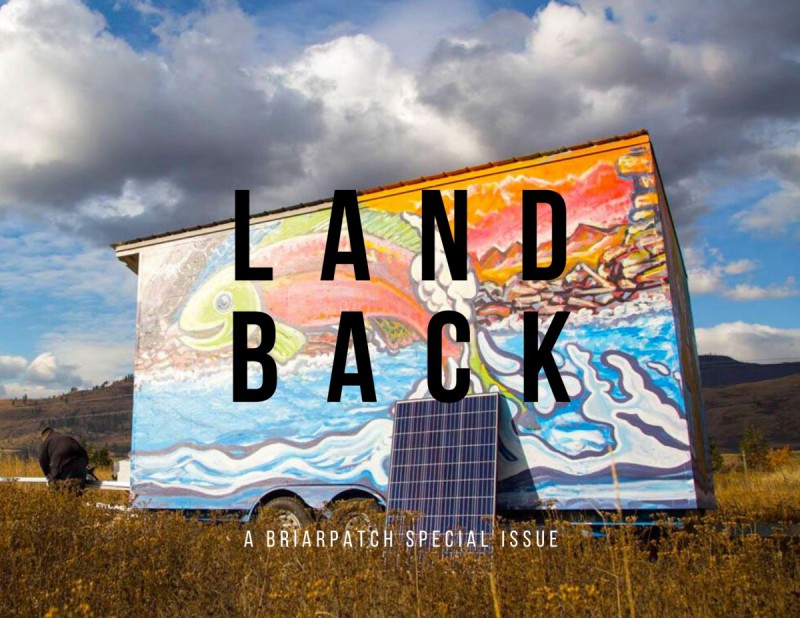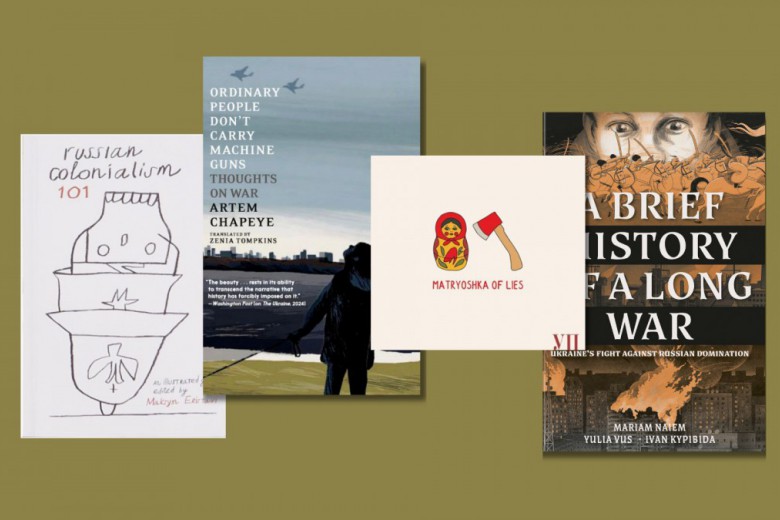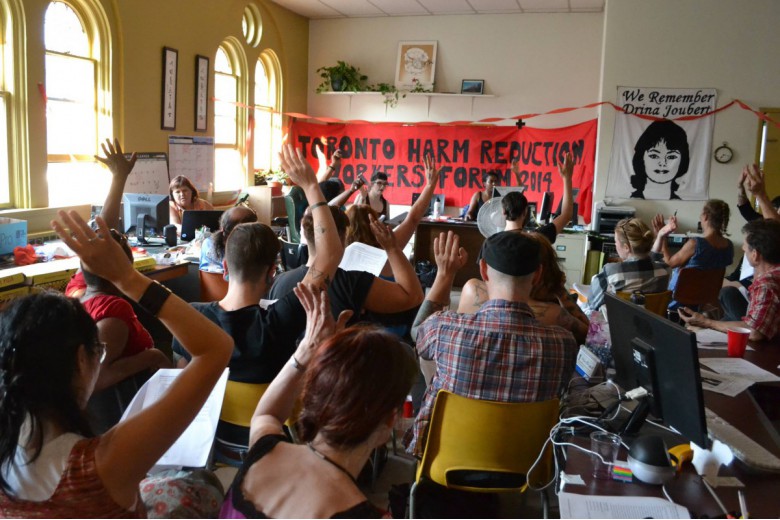
Photo via Tiny House Warriors
In February, as the RCMP arrested Wet’suwet’en land defenders who were protecting their unceded territory from the Coastal GasLink pipeline, a call rang out, echoing from Twitter to the railway blockades: “Land Back.”
The demand to return land to Indigenous peoples is not new: since colonization, Indigenous peoples have been fighting for rights and title to their land. Over the past year, Nigel Henri Robinson’s Land Back memes and the Yellowhead Institute’s Land Back Red Paper have helped renew the call.
Briarpatch wants to help expand, amplify, and sharpen the demand for Land Back in 2020. So we’re publishing a special issue for September/October 2020 that will address how to rightfully return land in what we sometimes know as Canada to Indigenous jurisdiction, and encourage the flourishing of Indigenous law, governance, and life on these territories.
As a magazine focussed on grassroots social movements and direct action, we’re most interested in physical reoccupation and legal repatriation of land (as opposed to Canada’s recognition measures that return partial or conditional jurisdiction). We are interested in sovereignty that moves away from Canadian politics and economic calculations, and in honouring the full and unconstrained exercise of Indigenous jurisdiction and consent over Indigenous lands.
We understand Land Back as both a process of undoing and of making something new, and this issue seeks to explore contributions that can speak to any part of that process.
Editorial collective
The Land Back issue of Briarpatch will be edited by Briarpatch’s editor, Saima Desai – a settler living on Treaty 4 territory – with the help of three editorial collective members:
Emily Riddle is nehiyaw, a member of the Alexander First Nation in Treaty Six. She once again lives on her own territories in amiskwaciwâskahikan. She is a researcher, writer, and library worker, who sits on the board of advisors for the Yellowhead Institute, a First Nations-led think tank based out of Ryerson University.
Nickita Longman is from the George Gordon First Nation on Treaty 4 and lives as a guest in Winnipeg, Manitoba on Treaty 1 Territory. Nickita graduated from the First Nations University of Canada with a BA in English in 2013. She is a community organizer, freelance writer, and Briarpatch sustainer.
Alex Wilson, Opaskwayak Cree Nation, is a professor in the College of Education at the University of Saskatchewan. Her work focuses on land-based education, queering education, and the protection of land and water through sustainable housing.
What we’re looking for
We are looking for investigative reporting, historical analysis, photo essays, timelines, personal essays, poetry, reviews, profiles, interviews, roundtables, debates, visionary fiction, art, and other contributions that defy standard categorization.
Below is an incomplete list of topic suggestions, and we invite submissions beyond these categories:
- Historical and present-day land disputes: Oka, Ipperwash, Gustafsen Lake, Burnt Church, Grassy Narrows, Caledonia, Elsipogtog, Wet’suwet’en, disputes over Treaty land
- Legal and regulatory dispossession of land: modern and historical treaties, fee simple agreements, the doctrine of discovery, private commercial contracts between Indigenous peoples and companies
- Cultural alienation from the land: residential schools, the ‘60s Scoop, the Millennial Scoop, loss of language and ceremony, MMIWG2, Indigenous presence in urban settings
- Crown sovereignty; Prairie provinces selling off provincial Crown land despite owning First Nations reserve lands through Treaty Land Entitlement
- Instances of settlers or settler governments giving land back to Indigenous nations
- Models of governance, consent, and management of land from different nations
- Overlapping traditional territories and jurisdictions
- Land Back’s digital presence: memes, hashtags, and digital activism
- Stories of hunting, trapping, fishing, growing food, and gathering medicines and berries on traditional territories
- Indigenous science, traditional knowledge, oral histories, and customs for stewarding and using land
- Indigenous food sovereignty and energy sovereignty
- The role of urban Indigenous communities in Land Back, including the growing presence of Indigenous-owned land in urban settings
- Indigenous ‘squatters’ and autonomous housing projects
- Anti-capitalist and non-capitalist relationships to land; land as kin; land as sacred
- Indigenous feminisms; dismantling the cis-heteropatriarchy through Land Back
- Visionary fiction, seven generations in the future
- The role of Black people and other racialized settlers in the Land Back movement
- Intersections between class struggle and Land Back; reclaiming land in order to build an economic base for Indigenous life
How to pitch
Pitches for this special issue are due on May 4, 2020.
This issue will feature writing and art mostly from Indigenous contributors. Preference will be given to pitches from Indigenous writers and artists. If you’re Indigenous, please self-identify in your pitch email.
Your pitch should describe what ground you will cover, give an estimated word count, and indicate your experience or background in writing about the issue. If you haven’t written for Briarpatch before, please provide a brief writing sample. Send your pitch to pitch[at]briarpatchmagazine.com.
Before pitching, take a look at some of our back issues to see what we have recently covered. Please review our submission guidelines and our guide to pitching.
If you’re an Indigenous writer who wants more support in polishing a pitch or developing an angle for your story, you can email saima[at]briarpatchmagazine.com with a draft of your pitch before April 20, 2020.
If your pitch is accepted, a first draft of your article will be due June 8, 2020, followed by a collaborative editing process lasting until about July 13, 2020.
Our standard rates of pay are:
- $100 – Profiles, short essays, parting shots (generally <1,500 words); feature art
- $200 – Feature stories (generally 1,500-2,000 words); photo essays
- $300 – Research-based articles and investigative reportage (generally 2,000–2,500 words)
We’re working to secure additional funding for this issue, in which case we’ll raise our rates of pay for contributors. If you’re interested in donating to increase contributors’ fees for the Land Back issue, please contact publisher[at]briarpatchmagazine.com.
We reserve the right to edit your work (with your active involvement), and cannot guarantee publication.


_copy_780_520_90_s_c1.jpg)



